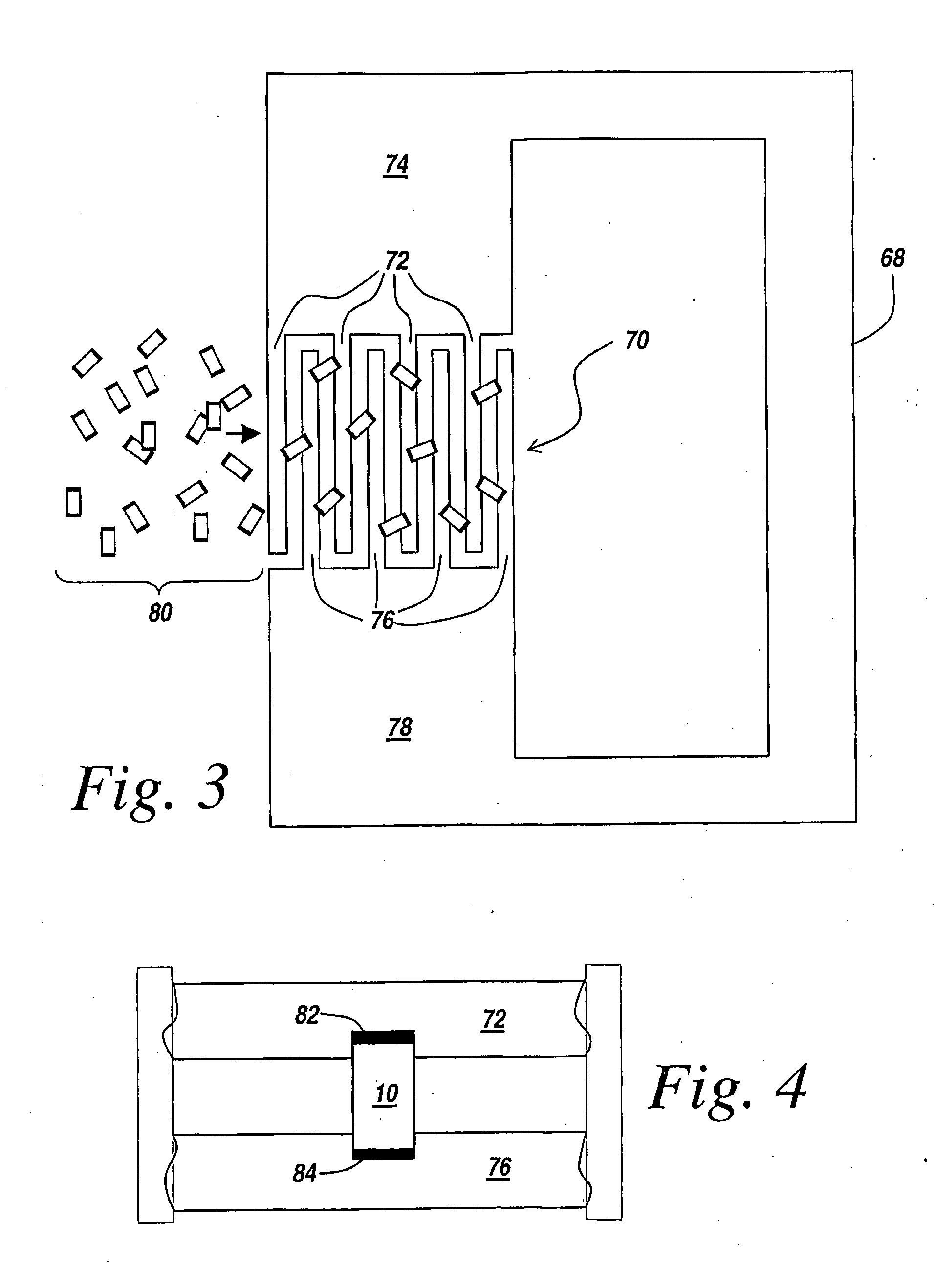Methods for coupling an RFID chip to an antenna
- Summary
- Abstract
- Description
- Claims
- Application Information
AI Technical Summary
Benefits of technology
Problems solved by technology
Method used
Image
Examples
Embodiment Construction
[0067]By way of further background, RFID tags are becoming a well-established method for tracking materials during shipping and storage. In many applications they replace the printed bar code labels on items because they do not require a close proximity for the automatic reader. RFID tags that conform to the ISO / IEC 18000 standard also can contain significantly more data than a printed bar code label and can be modified en route to include waypoint or other information.
[0068]Present RFID tags cost about $US 0.50 (50 cents) and are usually fabricated by electrically bonding a custom integrated circuit (IC) to a substrate containing a printed circuit antenna. The usual fabrication method, well known in the electronics industry is flip-chip bonding. An electrically conductive solder paste is applied to the appropriate places on the antenna. A “pick and place” machine picks up the IC die and places it onto the substrate in the proper location with respect to the antenna connections. The...
PUM
 Login to View More
Login to View More Abstract
Description
Claims
Application Information
 Login to View More
Login to View More - R&D
- Intellectual Property
- Life Sciences
- Materials
- Tech Scout
- Unparalleled Data Quality
- Higher Quality Content
- 60% Fewer Hallucinations
Browse by: Latest US Patents, China's latest patents, Technical Efficacy Thesaurus, Application Domain, Technology Topic, Popular Technical Reports.
© 2025 PatSnap. All rights reserved.Legal|Privacy policy|Modern Slavery Act Transparency Statement|Sitemap|About US| Contact US: help@patsnap.com



